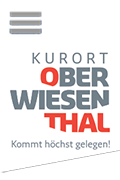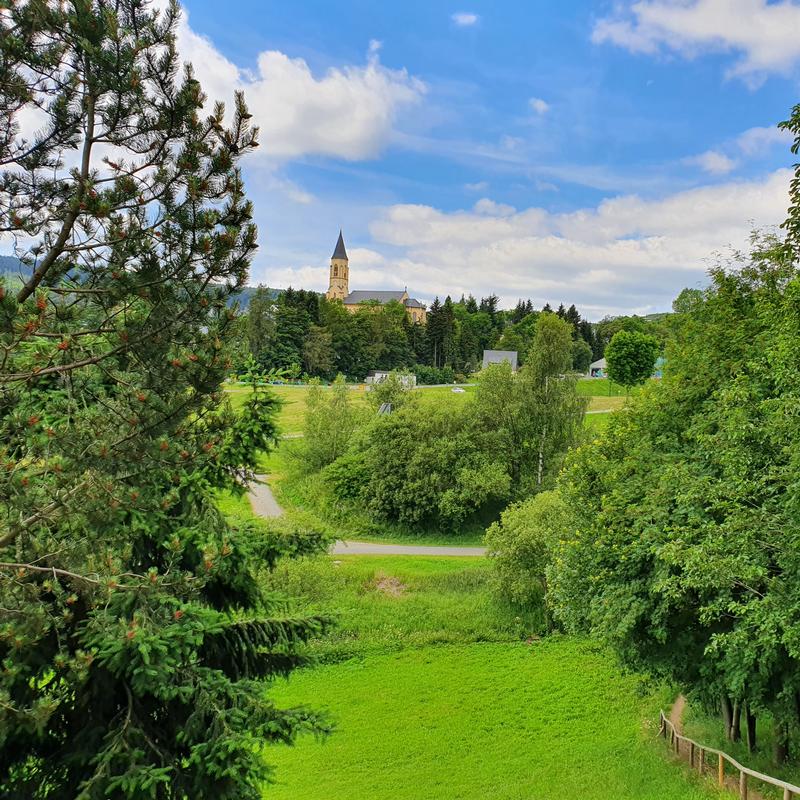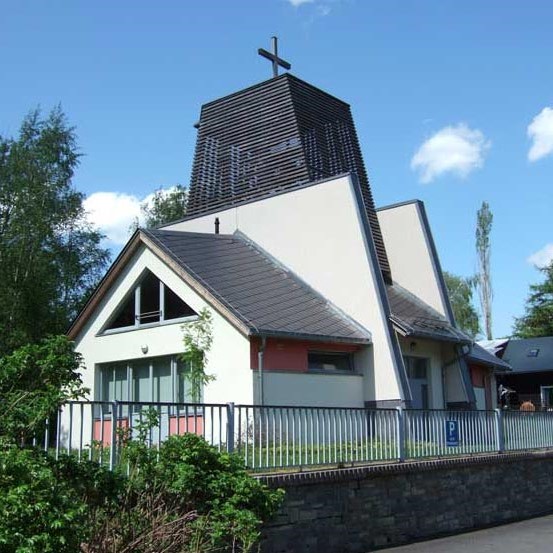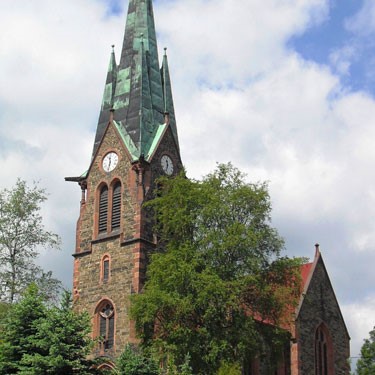


X
|
|
LODGINGS
|
|
|

The church continues to shape the visible contours of the city and region to this day. It was built in 1866 in the Neo-Gothic style by the architect Wendler of Zschopau.
Prior to this there was an older church, somewhat to the south, dating from 1665/1669, which fell victim to the flames in the great city fire of August 5th, 1862. Only the two chandeliers could be saved from the ruins, so that they provide a reminder of the old church in their location suspended in the new church.
There was an even older house of worship on the same site which exactly corresponded to the territorial border between Oberwiesenthal and Unterwiesenthal. It served both locations (as did the church from 1669) and had to be torn down to make room for the new church (built at the end of the 16th century) because it was too small. It in turn had replaced a chapel from “Wiesenthal” (today in Unterwiesenthal, near the railway crossing).
When we walk into the church today, we find the “Oberwiesenthal Nativity” on the right side, which was created in the year 1896 by Christian Karl Friederich Hertelt (1837–1921), a painter and wood carver from Oberwiesenthal. Still in its original condition, it can be viewed from December to February.
The large, leaded stained glass windows on the lateral walls of the nave present scenes from the Bible and church history. They were created in 1899/1900 based on the templates provided by Professor Winterstein of Leipzig in the artisan’s shop there and then installed here. In the middle front one finds the altar made of serpentine from Zöblitz with the altar piece (Mary Magdalene encounters the risen Christ) by historical painter Andrä of Dresden, which was uncovered in 1867. The church itself was re-dedicated by the State Bishop D. Ihmels (Dresden) on August 14th, 1927 on completion of the renovation and the remodelling by the architect W. Kandler (Dresden) and named the Martin Luther Church. All of this was done on the occasion of the locality’s 400 year anniversary. The church was again renovated and remodelled on the occasion of its 450th anniversary (1977), when it received the form in which we know it today. Services are still held here every Sunday at 10am. You can find information about church services in our events calendar.
The organ that was set up here in 1866 by Gotthilf Bärmig, has 26 registers and two manuals and pedals and 1,578 pipes. In 2013, the church tower will be renovated and completely restored to its original condition.
 S
S
The Roman Catholic Daughter Church “Christ the King”, located in Steingasse, was built in 2001 based on a design from the architectural firm of Lorenz + Roscher from Annaberg-Buchholz and Aue. That same year another new work of art found its place in the newly constructed house of worship. A handcarved nativity in the traditional Erzgebirge style was donated to the local Catholic community. It dates from the end of the 19th century and has a total of 111 figures by the noted woodcarver Mr. Bayer, who is known locally as the “Hergerschneider”. He came from Loučna pod Klínovcem, the district of Elend a few kilometres from Bohemia.
Erich Roller, then 12 years old, protected the nativity in 1946 during the chaos surrounding the forced expulsion of Germans from the area. He brought it back to the Erzgebirge in 2001 and it was then possible to set it up again in the Church of Christ the King in Oberwiesenthal and make it accessible to a broader public for the first time since the end of the Second World War. Mr. Rudolf Hieke and Mr. Paul Günther refinished the stall and the other buildings and the picture of the surrounding landscape in their free time in order to restore the ensemble to its traditional framework. You can see this nativity in the church during Advent and Christmas.
The sculptors Michael and Christopher Winkelmann from Soest designed and executed the sacral and artistic design. In the bronze work some of the existing objects such as the ambo and the Easter candelabra were used and worked into the new design. In the new altar, tabernacle and ambo, the theme of mountain crystal plays a guiding role.
The body of the altar cross comes from an older cross with a very exciting history. This body was re-worked by the artists and supplied with a new cross; together with the bronze crown, it creates a whole new work of art.
On All Saints’ Day 2003, thanks to several generous donors, it was possible to have 2 bells for the church’s bell tower blessed and dedicated by the Bishop of the Diocese of Dresden-Meißen, Mr. Joachim Reinelt. Prior to this the tower had been empty. The larger of the two bells, weighing 280 kg, was dedicated to St. Boniface, the Apostle to the Germans. It bears the scripture from Matthew 28:19 “Therefore go into all the nations and make disciples of every people.” The smaller bell, weighing 140 kg, bears the name of St. Martin and the scripture from Matthew 25:40 “Truly I tell you: Whatever you have done for the least of these my brothers, you have done for me.”
Announcements about church services and information about parish life can be found in the church.

Hammerunterwiesenthal. Kirchlich bildete der Ort eine Filiale zu Wiesenthal, erst 1743 vollzog man die Weihe der eigenen Filialkirche. Gleichzeitig erhielten die Hammerer mit ihrer Kirche einen eigenen Friedhof. Nach 150 Jahren wurde die baufällig gewordene Kirche abgerissen und durch den Neubau einer 2. Kirche ersetzt, welche im Oktober 1899 feierlich geweiht wurde. 1989 erfolgte der Neubau der Orgel unter Beibehaltung des alten Gehäuses, das Innere der Kirche wurde renoviert und die schöne Bemalung der Altarkuppel restauriert. Im Mai 1989 erklang die neue Jehmlich- Orgel mit 90 Pfeifen und 13 Registern. Zur 100- jährigen Kirchweih erhielt sie den Namen 'Philipp- Melanchthon- Kirche'.
